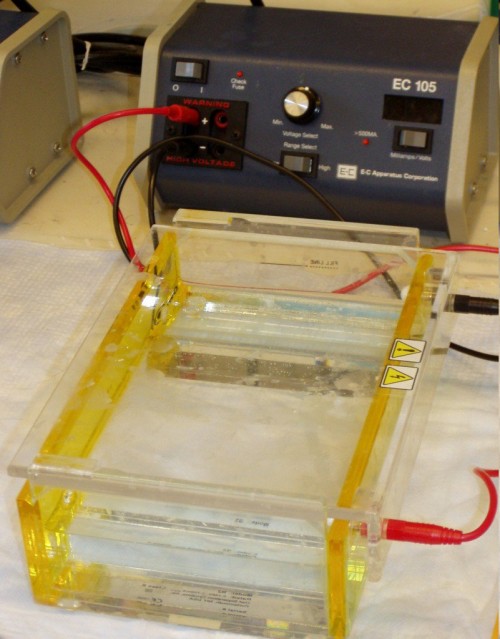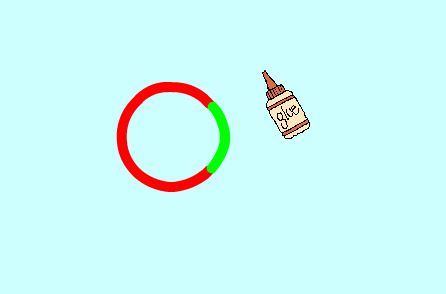
Image Source
On Monday we had the opportunity to connect with the Gene Technology Access Centre via the video conferencing equipment, Polycom. Nicole and Frazer facilitated a great session about recombinant DNA technology, including a demonstration of gel electrophoresis to determine if genes had been successfully inserted into a plasmid.
Did you know that humans have the same gene sequences as other organisms?
- 61% similarity to fruit flies
- 99% similarity to mice
- 99.9% similarity to chimpanzees
The human genome has 22 pairs of autosomes and 1 pair of sex chromosomes (XX in females and XY in males). Chromosomes exisit in the nucleus (as single strands) and there is also some (maternal – passed down from the mother) DNA in the mitochondria, which is circular. Prokatyotes (bacteria) also have circular DNA called ‘plasmids’.
Sea jellies have a gene that codes for a protein that is luminescent, called a “green fluorescent protein”. This gene is a useful marker, to determine if other genes have been successfully introduced to an organism.
Restriction enzymes (used for ‘cutting’ DNA) are used to open the plasmid, the new gene is inserted and then a DNA ligase is used to stick the ends together. We are using four different restriction enzymes (EcoRY13; BamH1; Nhe1 and Sma1). The DNA sequence at a restriction site is a palindrome – reads the same forwards and backwards. Some restriction enzymes cause ‘sticky’ ends (uneven or with a tail – exposed base pairs) while others cause ‘blunt’ ends (no overhanging base pairs). Once the new gene is inserted, complementary base pairs are joined by hydrogen bonds – or ‘pasted together’ with DNA ligase.
This is the process we will model using the paper cut-outs:
- E.coli is a bacteria that can be resistant to various antibiotics (eg. Amp R = ampicillin resistant).
- Cut the plasmid using a restriction enzyme.
- Insert the gene of interest into the plasmid, stick it together and produce the recombinant plasmid, which should contain the ampicillin resistance gene as well as the “GFP” (green fluorescent protein) gene.
- To test if the recombination has been successful, we need to use the restriction enzymes to produce various lengths of DNA. These are then pipetted into ‘wells’ in the gel. Because DNA is a negatively charged molecule, we load the wells at the negative end and attach the positive wire to the other end, so that the pieces of DNA a drawn through the gel matrix to the other side. The longest pieces move more slowly and travel the shortest distance, while the shortest molecules move most quickly through the gel and travel the greatest distance.


